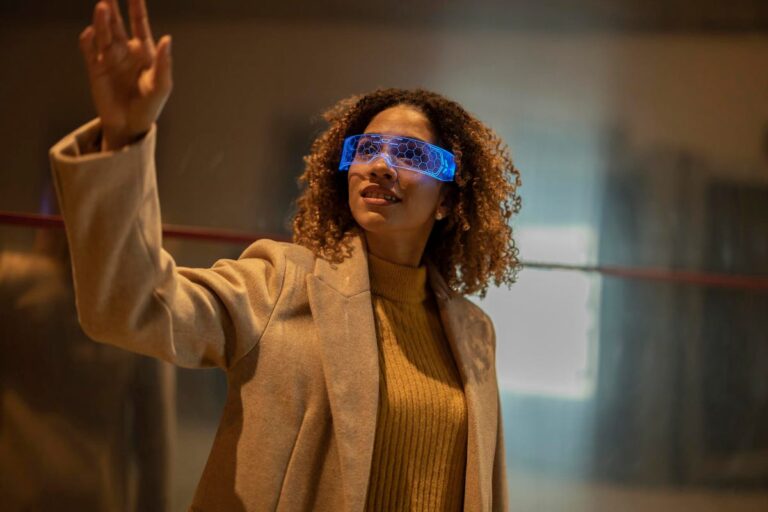
Source: news.google.com
Rodolfo Salazar is Managing Director of iDigital Studios and CEO of QUDOX. Accelerated customer growth│Helping companies become Unicorns.
getty
What will happen when video games meet Web3? When the virtual worlds are intertwined with the geolocation maps of the planet? When the simulations are so accurate that people feel the slightest difference between virtuality and reality?
Over the past year, a lot of people have been talking about the metaverse. Many others are already exploring virtual worlds, the realms of an anticipated 3D mixed-reality future. The Internet and the web are beginning to provide spaces where we can physically find ourselves trading goods and services in a new format that extends our physical reality into unlimited different virtual or extended universes.
There are a significant number of discoveries, consumer trends and emerging technologies that are shaping the reality around us: new forms of knowledge on the rise, builders and manufacturers, workshops and industries migrating, starting or at least thinking of finding ways to migrate to these improvements. and virtual worlds.
The metaverse is a very complex concept that is still in the making. Over the past few months, hundreds of concepts related to the metaverse have been collected, from products that amplify virtually everything physical to services that are physically persistent within virtual spaces. These are a fusion of what humanity can do and what humans can power and create through new technologies and virtual worlds.
The scenarios in the metaverse are very complex and uncertain. In some cases, they are like dreams or visions from a science fiction movie: unique scenarios of humans, companies and societies. These scenarios will begin to behave in cycles that will become trends, and these trends will quickly become realities for many around the world. They demonstrate how the reality within these worlds will become available and how change will revolve around our daily physical lives.
The metaverse contains different elements that we can group into four pillars, something I’ve written about before. The metaverse also encompasses technologies intertwined with human aspects and attitudes. A good example is one of the four pillars: mirror worlds, or “enhanced reflections of the physical world.” Thanks to technology and sensors that provide a layer of contextual data, these virtually enhanced realities could redefine our trial-and-error processes by using models of our work, life, and everything in between to be virtually analyzed and tested against physical options. , actions and results—including education, business, love, exercise, health, etc. This could lead the socialization of rudimentary physical models to very complex models. I believe that society will continue to transform even faster to embrace these new technologies and new amplification capabilities.
With the proliferation of sensors all around us, in five years it is expected that the number of sensors connected to the Internet around the world will multiply not by 10 but by 100, providing us with intelligence, data, information and physical and virtual interactions in any scenario. . It will also make us independent from certain institutions and professionals in a very tangible way. These new technologies will be ubiquitous and will provide us with links between reality and augmented extensions, enabling lifelogging (automatic documentation of the sensory complexity of life). These technologies will also allow us to experience life through other people’s five senses with interfaces that recreate and make us feel what others have experienced.
As I described in my previous article, the four pillars will merge in such a way that we will reconsider our physical identity with the options of various virtual identities.
The question we ask ourselves is: How far is this metaverse? Some say that we are 10 or more years from this new reality; Others think that we have already been submerged in it for 10 years. I believe the metaverse is in the making, and we are in the thick of watching technology give us ways to amplify ourselves physically and virtually every day since the early 21st century. I would say that we are about to start seeing these scenarios through our devices and the new ways of doing things in the next three to five years.
The first thing that can start to hit us is the proliferation of sensors and tools for the analysis of all the data that will be available to the human race. Whether we carry the sensors on our bodies or devices, or they are embedded in the world around us, we will have a wealth of data and information that will lead us into a new era of hyper-transparency. It will be much more difficult to duplicate or falsify what is already part of the public record, and the development of reputational networks will make it more difficult for people to have a chance at not becoming the best version of themselves.
This will not remain only for a part of society, we will all be able to see in a transparent way where each one is and what each one is doing, and I believe that this power will cause a radical change in people. It will be more difficult to live in anonymity and it will be more expensive to stay out of the public eye. I believe that this transparency and digitized reputation will cause situations that will begin to raise entire virtual communities for or against different issues in the world. Many will participate in experiments with social rules under alternate identities. Others will have the ability within these spaces to have much greater status, abilities and recognition than they do in the physical world. Because of this, it will be very attractive for some to grow their virtual identity more than the real one. All of this, of course, assumes that the technologies will work as intended, making a simple contribution to people’s daily lives.
Forbes Agency Council is an invitation-only community for executives from successful public relations, media strategy, creative, and advertising agencies. Do I qualify?
Read More at news.google.com